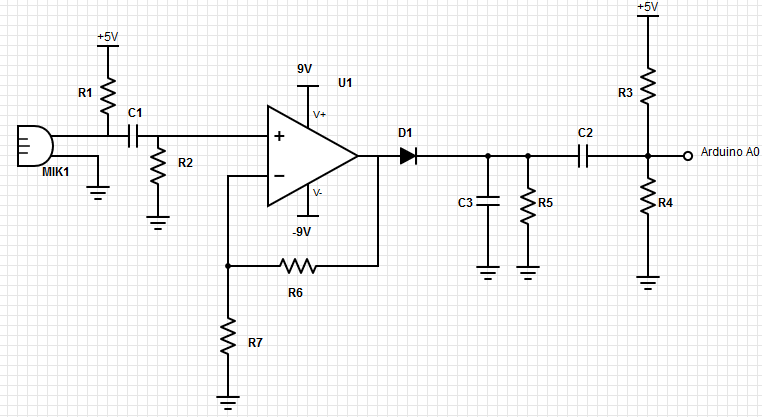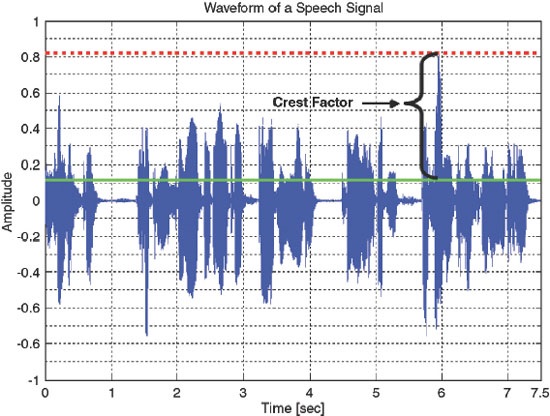Ok so in the last couple of days I did a lot of research to get everything to work. What I want to do is make a dB sensor with the Arduino. I made the following circuit:
To make the supply voltage for the op-amp U1 I have used the following as power supply:
I have set the values of the first circuit to the following:
- R1=2200 ohm (this matches with the internal resistance of the mic)
- C1=100nF
- R2=38100 (To match the Fcut of 50 Hz)
- R6=100k ohm
- R7= 1k ohm
- R3=r4=1kohm
- D1,C3,R5 are currently left out ,because there are some problems earlier on
- R3=R4=1kohm , therefore there will be added a offset of 2.5 volts
- The op-amp is a lm741
- Mic datasheet: http://www.farnell.com/datasheets/1660938.pdf
I have made the amplification of the op-amp 100, because of I wanted the max. value of 2.5 volts to be around that decibel level. The maximum that will be measured is 2.5 volts. The sensitivity of the mic is -41 dB by 94 decibel and that (thanks to andy aka) will/should become 2.5 volts (peak voltage) when measuring.
The big problem is that I only get 200 mV at max (I tested with 90dB-100dB). What could be the problem? Any error in the schematic, please tell me I am really learning a lot right now over this topic!




